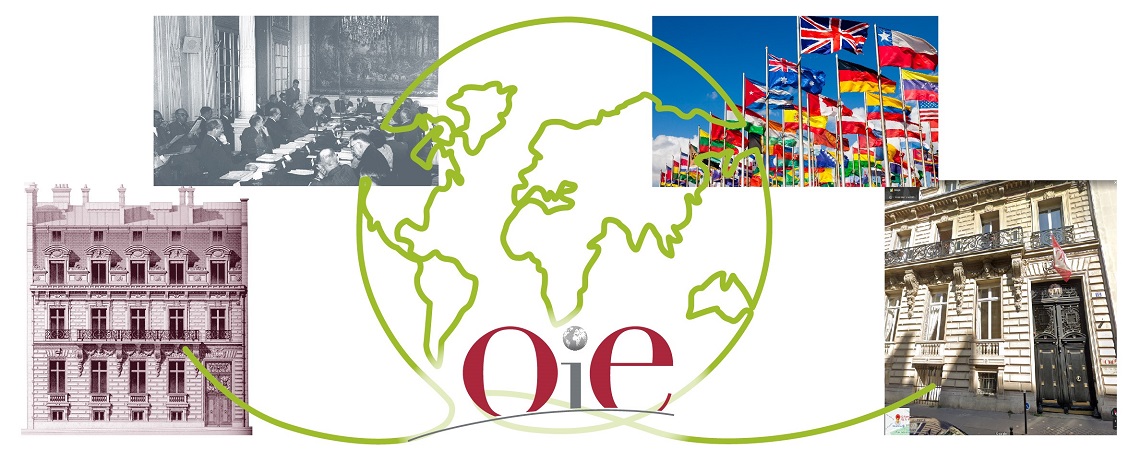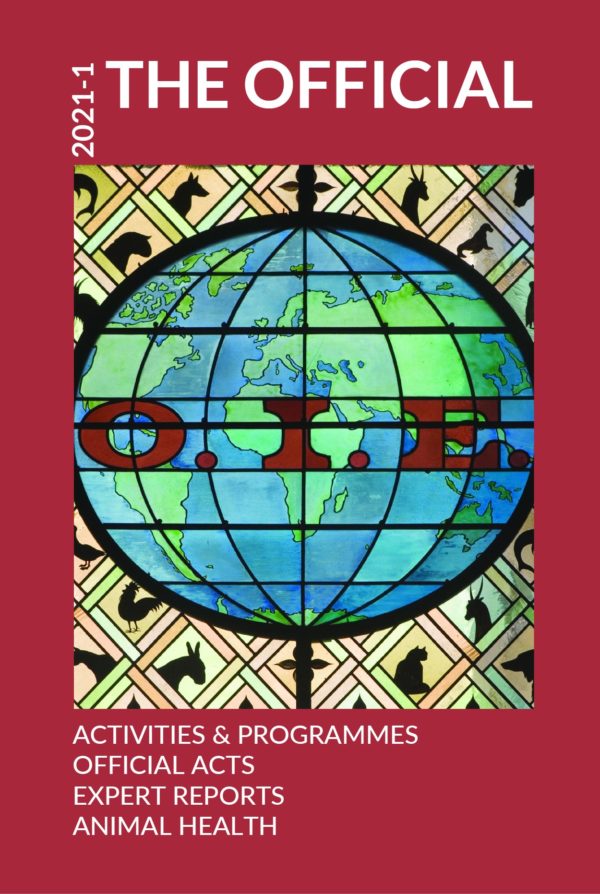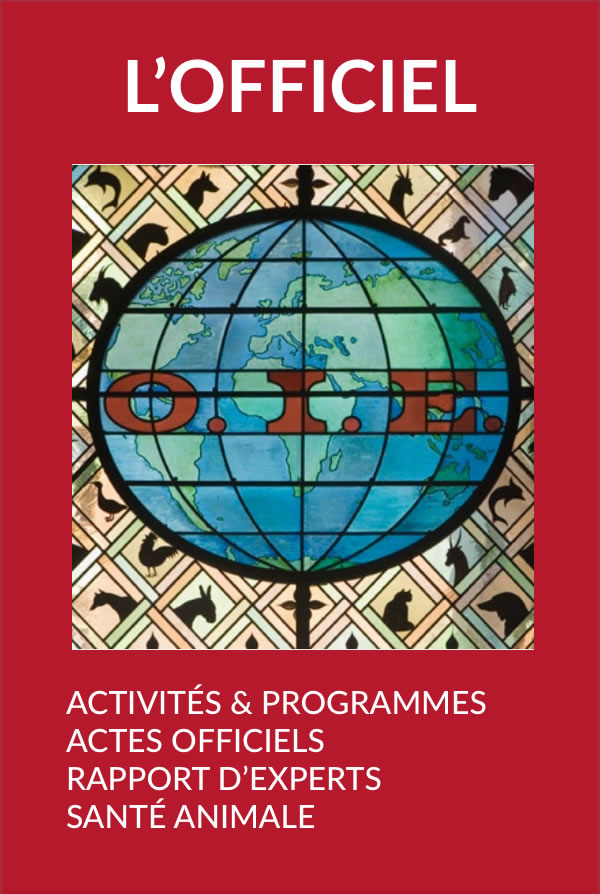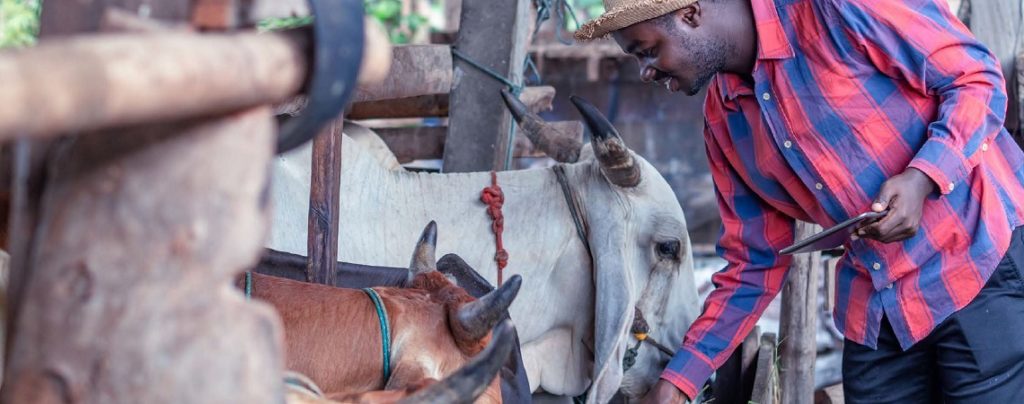Activities & Programmes Posted on 2021-11-16 11:35:00
OIE
Centenary of the 1921 Paris International Conference which led to the creation of the OIE
Keywords
The International Office of Epizootics (the OIE) was founded at one of the most distressing moments for veterinarians in the days following the First World War, when the sources of food production in Europe had been destroyed and misery and hunger paralysed the lives of all the warring countries.
An outbreak of rinderpest in Belgium in 1920 …
In these difficult post-war years, another threat came to a Europe already in ruins. Rinderpest was found at the Belgian port of Antwerp in June 1920 with a shipment of zebu (Indian cattle), en route from India to Brazil. The apparently healthy animals were disembarked and quarantined in transit areas, to be taken aboard another ship that would carry them to Brazil. Meanwhile, three shipments of beef cattle arrived at the same port from the United States. These animals were shipped by rail in small batches to regional slaughterhouses. A few hundred of them were placed in the same location as the zebu, and stayed there for one or two days before being transported to the dispatch centres. However, a severe outbreak of rinderpest broke out among the animals that had been stabled with the zebu.
This news was of serious concern to the whole of Europe: not only to all of its veterinarians, particularly the Heads of national Animal Health Services, but also to farmers, breeders and the public in general, who brought enormous pressure to bear on the governments of the day.
Also known as ‘cattle plague’, rinderpest has always been a scourge. Outbreaks of the disease have wiped out herds for thousands of years. During the 18th Century, over 200 million cattle died of the disease in Europe and, in 1889, a deadly epizootic event was recorded in Africa, caused by the introduction of three infected Indian cattle into the port of Massawa, Eritrea. The disease spread to the south of Africa and killed 90% of all cattle in eastern and southern Africa.
Moreover, the need to prevent and control the disease led to the creation of the first veterinary schools in France (1762), Egypt (1827) and India (1872), and led Dr John Gamgee, Professor of Animal Anatomy and Physiology in Edinburgh, Scotland, to organise the first International Veterinary Congress in Hamburg, Germany, in 1863.
… was the source of international cooperation for the control of animal diseases …
The risk posed by rinderpest in Belgium was mitigated thanks to the radical measures adopted. All infected animals, as well as animals that had been in contact with them, were immediately slaughtered; the carcasses and contaminated materials were burnt; and the strictest surveillance measures implemented. But the alarm had sounded, highlighting the responsibility of governments and amplifying the voice of veterinarians, which was already being heard in the International Veterinary Congresses. It was embodied by Professor Emmanuel Leclainche, Head of the French Veterinary Services, who declared: ‘the defence of a country’s livestock against epizootics depends not only on the measures adopted by that country, but also on international agreement, whereby a disease prevention programme is established and developed in all the countries of the region, of the continent and the world’.
… which led to the creation of the OIE in 1924
Multilingual and passionate about international veterinary work and research, Professor Leclainche took a leading role in the organisation of the international conference for the study of epizootics and their prevention.
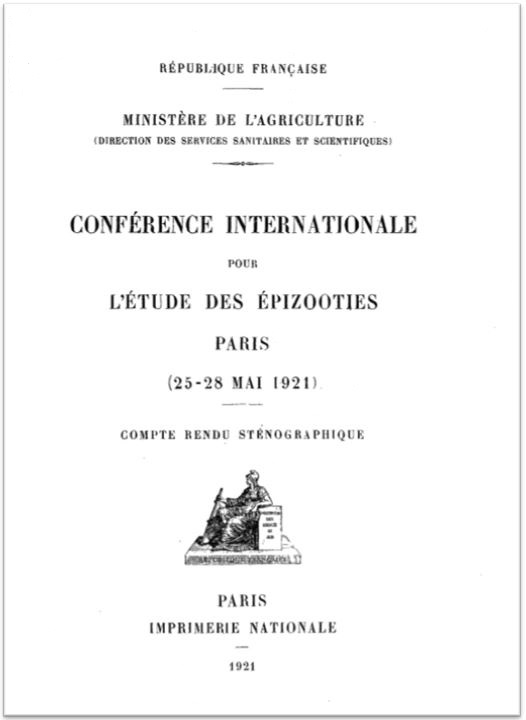 Delegations from 43 countries and territories participated in the Paris Conference from 25 to 28 May 1921, including countries from Europe (Austria, Belgium, Bulgaria, Denmark, Finland, France, Germany, Great Britain, Greece, Hungary, Ireland, Italy, Monaco, Norway, Spain, the Netherlands, Poland, Portugal, Romania, the Kingdom of Yugoslavia, Sweden, Switzerland and Czechoslovakia), nine countries from the Americas (the Republic of Argentina, Brazil, Canada, Chile, Ecuador, Haiti, Paraguay, Peru, and the United States of America), three from Africa (Morocco, Tunisia and the Union of South Africa) and three from Asia and the Pacific (Australia, Japan and New Zealand).
Delegations from 43 countries and territories participated in the Paris Conference from 25 to 28 May 1921, including countries from Europe (Austria, Belgium, Bulgaria, Denmark, Finland, France, Germany, Great Britain, Greece, Hungary, Ireland, Italy, Monaco, Norway, Spain, the Netherlands, Poland, Portugal, Romania, the Kingdom of Yugoslavia, Sweden, Switzerland and Czechoslovakia), nine countries from the Americas (the Republic of Argentina, Brazil, Canada, Chile, Ecuador, Haiti, Paraguay, Peru, and the United States of America), three from Africa (Morocco, Tunisia and the Union of South Africa) and three from Asia and the Pacific (Australia, Japan and New Zealand).
The Sixth Resolution of the Conference expressed the wish that an International Office for the Control of Infectious Animal Diseases (epizootics) should be established in Paris and placed under the authority of a Committee that would meet at least once a year. Within less than three years, 28 states had approved the recommendation and an International Agreement for the creation of an Office International des Epizooties (OIE) was signed on 25 January 1924. The OIE’s first Director General, Emmanuel Leclainche, remained in the position for 22 years, passing the baton to his successor, Gaston Ramon, in 1946.
The OIE collaborated with other international and regional organisations to implement vaccination programmes, surveillance and testing. It had a crucial role in streamlining the process for certification of countries as being free from specific animal diseases. Moreover, the world was officially declared free from rinderpest during the 79th OIE General Session in 2011. The eradication of rinderpest is one of the most important achievements in the history of veterinary medicine.
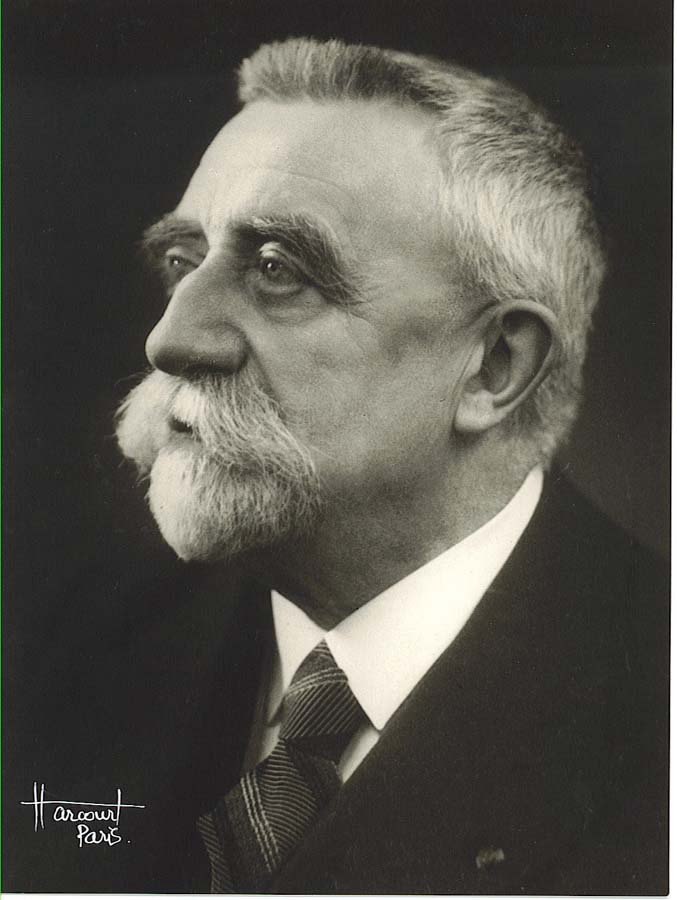 Emmanuel Leclainche was born in Aube, France, in 1861. He graduated at the Veterinary School of Alfort in 1882 and became a teacher of veterinary medicine in 1886. In 1891, he was appointed to the Chair of Infectious Diseases Pathology at the Veterinary School of Toulouse. His scientific work included research on swine erysipelas, blackleg (Clostridium chauvoei) and gas gangrene (C. perfringens). In addition, he was a prolific author. In 1891, he wrote the Précis de médecine vétérinaire (Veterinary Medicine Handbook), and in 1895, with Professor Edmond Nocard, the Traité des maladies microbiennes des animaux (Treatise upon Microbial Diseases of Animals), which remains a classic. In 1903, he founded the Revue générale de médecine vétérinaire (General Review of Veterinary Medicine). In 1911, he was appointed Inspector General, Director of Health Services, at the French Ministry of Agriculture. He played key roles in the reorganisation and unification of the French Veterinary Services, in the General Inspection of Veterinary Schools, in the creation of the OIE, in the French Veterinary Academy and in law reform related to the veterinary profession (e.g. the creation of the Doctorate of Veterinary Medicine). |
https://doi.org/10.20506/bull.2021.1.3272
Contact: OIE Documentation Cell
References
- La Semaine Vétérinaire dated 23 June 1921: https://gallica.bnf.fr/ark:/12148/bpt6k5506039x.
- Ministère de l’agriculture (France) (1921). – Conférence internationale pour l’étude des épizooties, Paris, 25-28 mai 1921. https://doc.oie.int/dyn/portal/index.xhtml?aloId=17574&page=alo.
- Alnot L. & Pistre G. (2005). – La vie et l’œuvre d’Emmanuel Leclainche (1861-1953). Bull. Soc. Fr. Hist. Méd. Sci. Vét., 2005, 4 (1), 94–103. http://sfhmsv.free.fr/SFHMSV_files/Textes/Activites/Bulletin/Txts_Bull/B5/Leclainche.pdf.
- World Organisation for Animal Health (OIE) (1954). – Emmanuel Leclainche – 1861-1953. OIE Bull., 41 (1). http://doc.oie.int/dyn/portal/index.xhtml?page=alo&aloId=31456.
- World Organisation for Animal Health (OIE) (2007). – A brief history of the OIE. OIE Bull., 2007 (1). http://doc.oie.int/dyn/portal/index.xhtml?page=alo&aloId=30632.
- OIE Rinderpest portal: https://www.oie.int/en/for-the-media/rinderpest/.
- ‘Never turn back’ website: https://rinderpestvigilance.com/en/.




